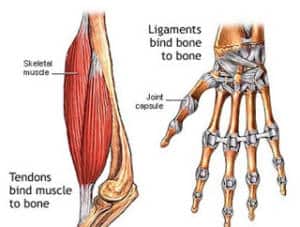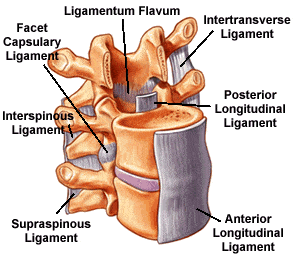Fascia Release

Not only muscles can cause pain in your back, neck or anywhere else(e.g. hand of foot), as well the tense and injured ligaments, by repetitive strain, work, life accidents etc.
Ligaments bind bone to bone, tendons bind bones to muscles.

Neck and Upper-Mid back
Let’s look more into ligaments that could be causing neck and back pain, in some other post I will expose tendons.
These are ligaments around your spine in the neck and upper back area (a lot of them!):
Nuchal (ligamentum nuchae)
• Supraspinous ligaments
• Interspinous ligaments
• Intertransverse ligaments
• Supraspinous ligaments
• Interspinous ligaments
• Intertransverse ligaments
And you neck and upper back spine is surrounded by these muscles:
Muscles:
• Sternocleidomastoid
• Trapezius
• Suboccipitals
• Scalenes
• Splenius capitus
• Splenius cervicis
• Levator scapula
In order to make your neck(or back or anywhere else) not to hurt sometimes a licensed therapist (e.g. me) has to separate these ligaments from muscles and skin and brake up scar/tense/inelastic tissue. It is done by performing myofascial stretching, aka similar to “massaging” but more precise, usually slow and somewhat light to deeper or deep pressure. This work requires good anatomy knowledge and experience. I personally believe in using some oil in some particular areas, some therapists might choose not to during myofascial work. Also I do not believe in “light” myofascial work., it will not help most people, these medium to little deeper work is required in most of my experience with clients.
Lower Back Anatomy
The same method is used to heal lower back pain.
Pelvis & vertebrae anatomy:
• Ilium, ischium, pubis
• Sacrum
• Lumbosacral joint
• Sacroiliac joint
• Spinous process
• Transverse process
Ligaments:
• Supraspinous and Suprasacral ligaments • Interspinous ligaments
• Intertransverse ligaments
• Sacroiliac ligaments
- Iliolumbar ligaments & Sacrotuberous ligaments
Muscles:
• Erector spinae
• Quadratus lumborum
• Gluteus medius
• Tensor fascia latae
The Fascial separation must be performed on these lower back muscles and ligaments the same way it is done in the neck but just using different techniques because of the different muscle structure.

Anatomy Of The Muscle Of The Back Lower Back Muscle Anatomy Lower Back Muscle Anatomy Human – Human Anatomy Library
Licensed Massage Therapist in Burlington, Vermont
-Jolita Brilliant


